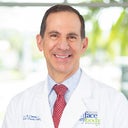What are the risks associated with this procedure?
Answers (4)
From board-certified doctors and trusted medical professionals
Dr. Ross A. Clevens, MD, FACS

Dr. Ross A. Clevens, MD, FACS
Board Certified Facial Plastic Surgeon
Answer
Dr. Jason Emer, MD

Dr. Jason Emer, MD
Dermatologic Surgeon, Board Certified in Dermatology
Answer
Dr. Lawrence Eisenhauer, MD
Dr. Lawrence Eisenhauer, MD
Board Certified OB-GYN
Answer
More SculpSure Questions
See all SculpSure Q&AWE SEND PRETTY
EMAILS
What’s trending? Who’s turning heads? Which TikTok myths need busting? We’ve got you. No fluff, no gatekeeping—just real talk. Get our free, unfiltered newsletter.